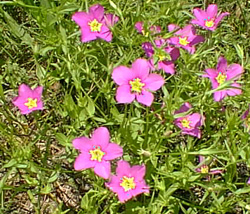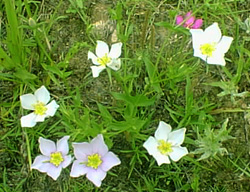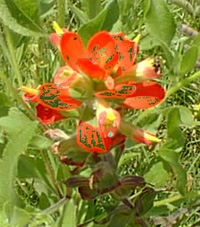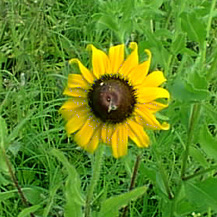
Texas Star (Sabatia
campestris)
(March to July)
Also known as Meadow Pink, this flower is supposed to arrive in early spring, but in this yard, it is one of the last spring flowers to appear. It usually forms large colonies, forming ribbons of pink. In this year, it appears in small groups. After making a minimal appearance two years ago, it disappeared last year, returning this year at the end of May.



